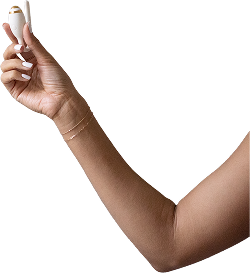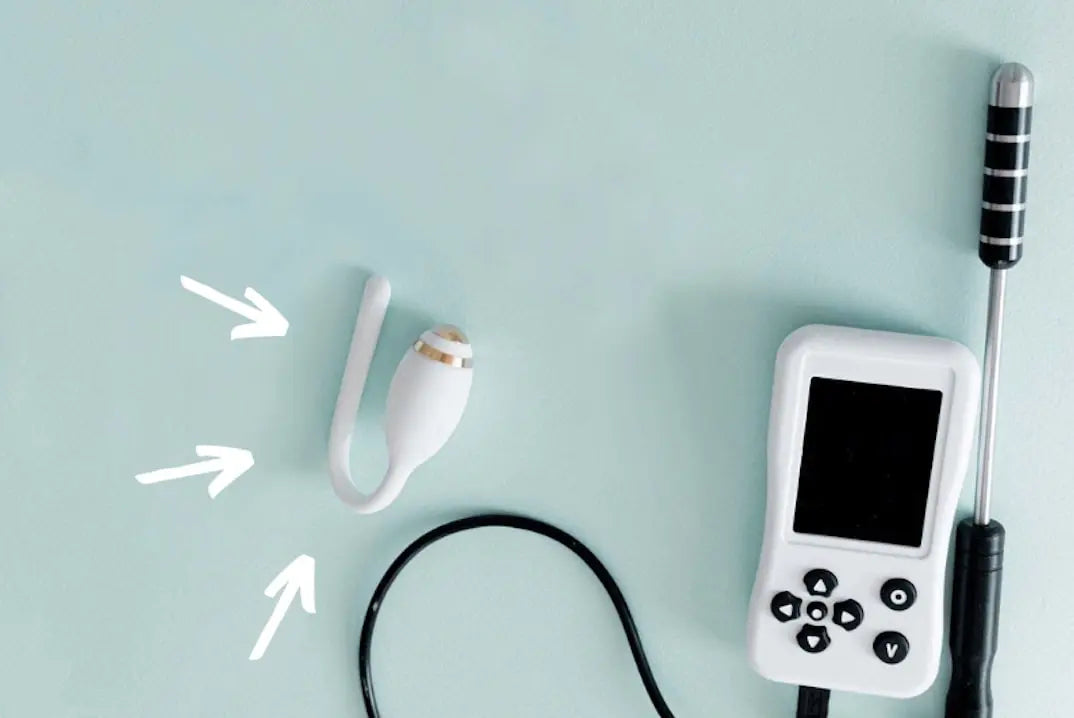Disclaimer: Opinions expressed in this blog are solely those of the author.
I’ve been tracking my fertility with FABMs (fertility awareness-based methods) for several years now. I’m always curious about new fem tech and have tested out a few fertility tracking devices over the years. I began using kegg in the summer of 2020. While I’ve been familiar with OvaCue, I had never bothered to try it since it seemed cumbersome with all of its probes. I was recently asked by a friend if I’ve ever used the OvaCue because she wondered about the difference between OvaCue and kegg. I had been curious too and decided to take the plunge and test them both in the same cycle.
First a little background for both devices…
OvaCue
OvaCue is a hand-held monitor that runs on two AAA batteries. It includes a plug-in oral sensor and a separate plug-in vaginal sensor. The monitor connects via USB to your laptop or PC. When connected to a laptop or pc, you upload your daily readings to your OvaGraph account and then your results are displayed in your account online in an app called OvaGraph.
The OvaCue measures changes in the electrolyte levels in your saliva and cervical mucus that change with hormones throughout the cycle.
OvaCue is patented and trademarked.
kegg
kegg is a rechargeable device for vaginal readings and optional kegel exercise. After completing the daily test, kegg connects with its free app on your phone via Bluetooth technology. Your daily kegg reading can be viewed in the kegg app immediately after testing.
kegg measures electrolyte levels of cervical fluid that change with hormones throughout the cycle and uses an algorithm (“the kegg method”) to predict the fertile window in advance, based on your previous trends. It also identifies an estimated ovulation window at the completion of the cycle.
kegg is patented and trademarked.

First impressions:
OvaCue
The OvaCue has been around for over 20+ years and honestly, it feels like it hasn’t been updated since. The box comes with the monitor, two sensors, a USB cable, 2 AAA batteries, a manual, and a small drawstring bag to store it in.
The device and sensors are clunky. The vaginal sensor especially did not look very inviting. The monitor feels very much like a handheld gaming toy from the mid-90s, slightly nostalgic! …But not what I’m looking for in a fertility monitor. The manual was thorough and clear. Navigating through the OvaCue programming process was tedious and not intuitive for someone used to the ease of touchscreens and smartphones. I was able to figure it out since I’ve used flip phones of the ’00s. But in an age of smartphones and touchscreens, it takes some extra time to navigate and make selections. Either way, OvaCue is annoying to navigate. The only thing the OvaCue monitor stores is up to 4 months of oral and vaginal readings, and cycle start dates. If I want to log more cycle info or see my results on a graph I need to set up an OvaGraph account and upload my readings to my laptop or pc.
The OvaGraph app is thorough but again not the most user-friendly to learn and navigate. Once I’ve uploaded my OvaCue data I can see my reading on a graph and I can record other items like BBT, LH tests, sex, spotting, fertility treatments or procedures, and so on.
kegg
kegg looks and feels sleek and cutting edge. In the box it comes with the kegg sensor, charging cradle, cord, and block, and manual. The kegg sensor is made with soft, durable, medical-grade silicone, along with a gold-plated sensor tip. It fits in the palm of my hand and has a soft flexible tail. The manual was clear about getting started and how to test. Setting up my kegg account went very quickly. I downloaded the app from the app store, created an account, registered my kegg with the QR code listed in the box. The app is easy to navigate and I can record other items like BBT, LH tests, Progesterone tests, sex, spotting, etc.

Learning to use:
OvaCue
Testing with OvaCue takes some getting used to. At the beginning of a new cycle, the oral sensor is to be used first thing in the morning before eating, drinking, brushing teeth, taking BBT etc. The oral test should be done at about the same time each morning, and it’s up to you to remember to test as there is no notification or reminder. Missing an oral reading could mean not getting a fertile window prediction. The OvaCue Monitor is bright – so bright it’s hard to look at first thing in the morning. As I begin to stir awake I find myself thinking about my saliva which is strange for me. The oral sensor has three small metal pads. After using the oral sensor I have a slightly strange feeling on my tongue but nothing painful or worrisome. It’s only in the mouth for about 6-8 seconds. After testing you are asked to save your oral reading. If you accidentally delete it, you can’t/shouldn’t test again because placing anything in your mouth triggers saliva production and a second reading will not be accurate.
Testing with the vaginal sensor can be done at any time of the day but needs to be consistent – keeping within a two-hour window. Using the vaginal sensor was a little complicated. The probe is long and has to be placed at just the right depth and held in place at just the right angle… It would be helpful if the manual had an illustration to help with this otherwise there’s no easy way to know if you’re doing it correctly. I assumed I would have an advantage since I’ve been doing manual cervical checks for many years but I felt a bit lost with the placement for OvaCue. The probe is long enough that I have to be laying down and have to pull my pants down in order to test. Again, the testing is done in seconds. You are then asked to save your vaginal reading. And again, if you accidentally delete your reading you can’t/shouldn’t test again because the first test will have potentially changed the vaginal environment and the second test will not be accurate.
Both OvaCue oral and vaginal readings are displayed as numbers that have little meaning to me. I can go to a list of readings but there is nowhere in the monitor to see the readings displayed on a graph. The only way to see that is by uploading it to my PC or laptop. In the OvaCue monitor, there is a calendar that eventually gets filled in with different color codes predicting my fertile window if the oral sensor makes a detection.
kegg
Testing with kegg is pretty straightforward. As with OvaCure users are encouraged to be consistent, testing within the same two-hour time frame each day. I can set my desired timeframe and the app will remind me to test each day which is very convenient. If I forget when I did my other tests I can see the times I tested on each data point in the kegg app – I can’t do this with OvaCue and it’s totally dependent on memory. The kegg sensor is very comfortable to use. It’s small enough that I can insert the sensor without having to pull my pants all the way down. I can even test while standing and brushing my teeth if need be. It’s so comfortable there was even a time I forgot I still had kegg inserted!
Final thoughts:
Overall both devices did a great job at predicting my fertile window. Based on my personal observations my ovulation likely happened on or very near cycle day 12 or 13.
OvaCue predicted my fertile window to be between cycle day 9-13. I assume because my ovacue readings were erratic, OvaCue later added days 14 and 15. I was feeling pretty confident in my own interpretation of OvaCue’s vaginal data by cycle days 13 and 14 with the sudden dip and sharp rise… but then cycle days 15 and 16 did the same and it became less clear…

kegg predicted my fertile window to be between cycle days 11 and 15 with peak fertility on days 13-15. When the cycle was completed kegg adjusted the fertile window to cycle day 10-14 with peak fertility on day 12-14.

kegg and OvaCue are using a similar method, measuring electrolytes to determine the fertile window. When comparing the two devices kegg was definitely far more comfortable and convenient to use. It was also great to be able to see my kegg data in the app automatically. Having to upload my OvaCue data to my PC was an annoying chore. It also made me very nervous that I could accidentally erase my readings from the device and had to be very careful while navigating in the menus of the OvaCue monitor. For someone looking for new and reliable insights into their fertility and wanted a device and app that was easy to use I would definitely recommend kegg.
| $ | App | Intuitive | User Friendly | |
| OvaCue | $269 | Optional & Manual | 2/10 | 5/10 |
| kegg | $259 | Integrated | 8/10 | 9/10 |
See also:
kegg and Tempdrop (body basal temperature) post
kegg pregnancy stories


